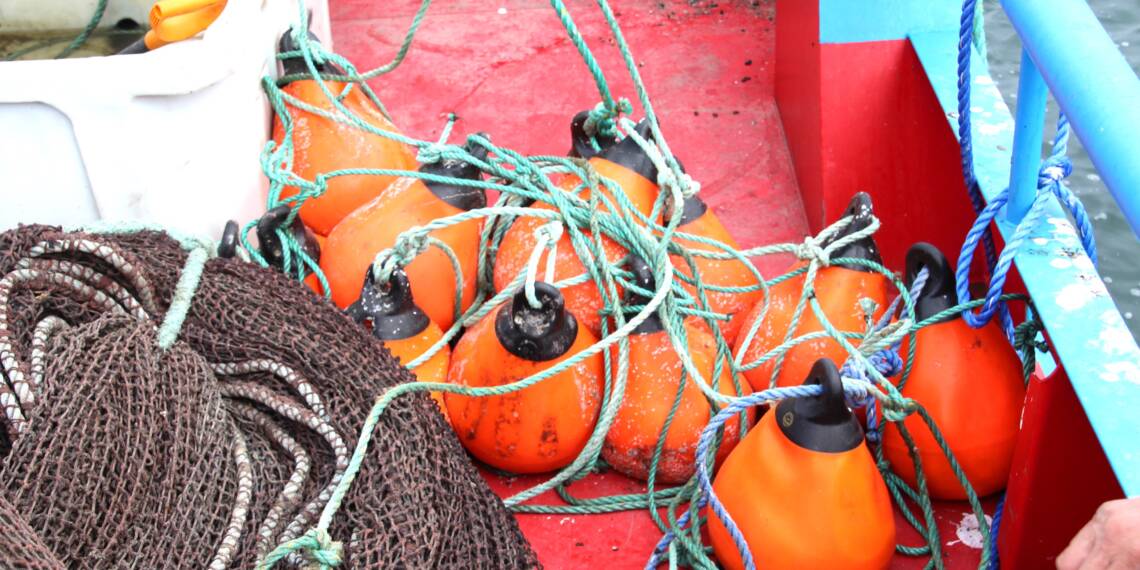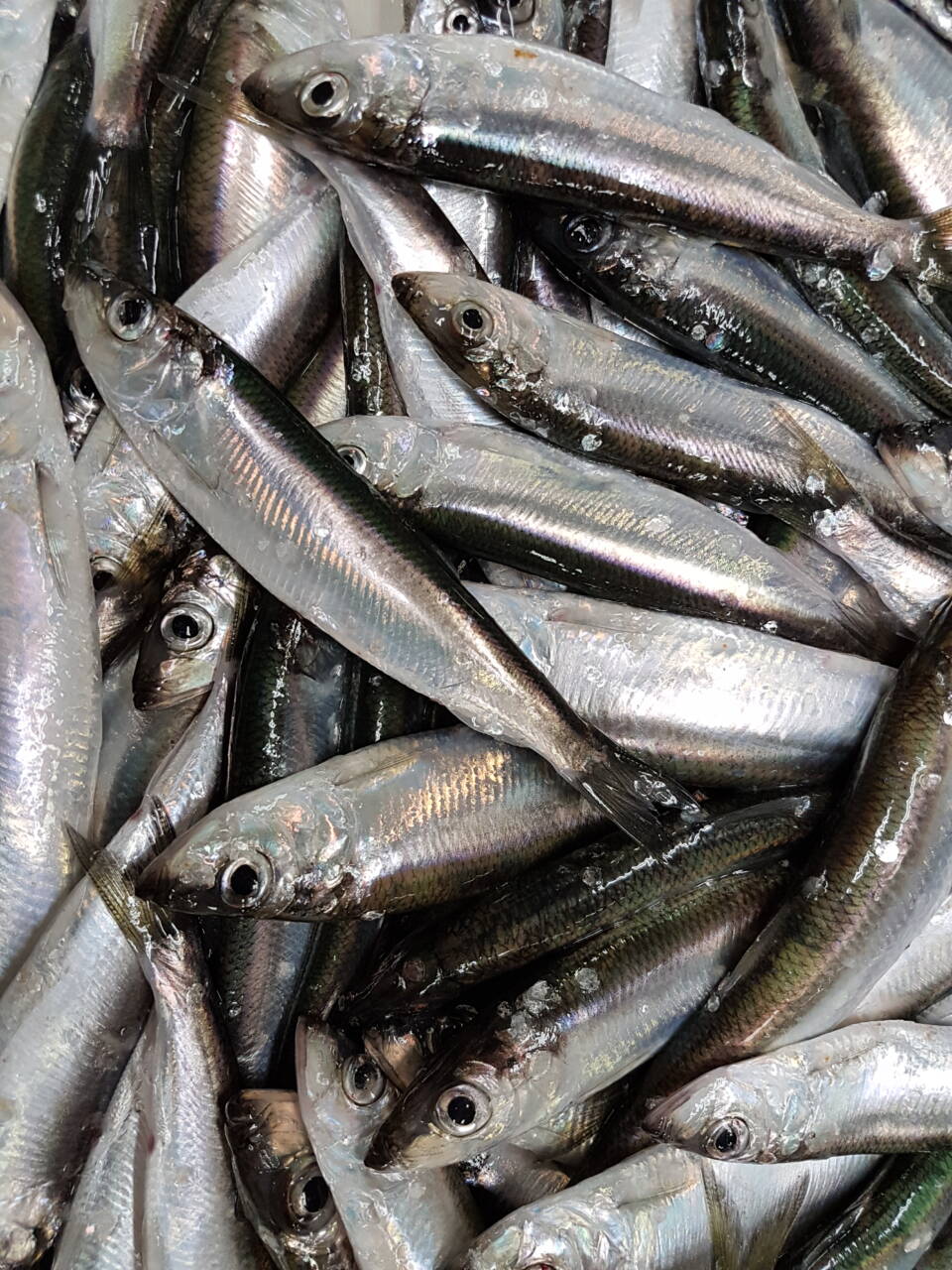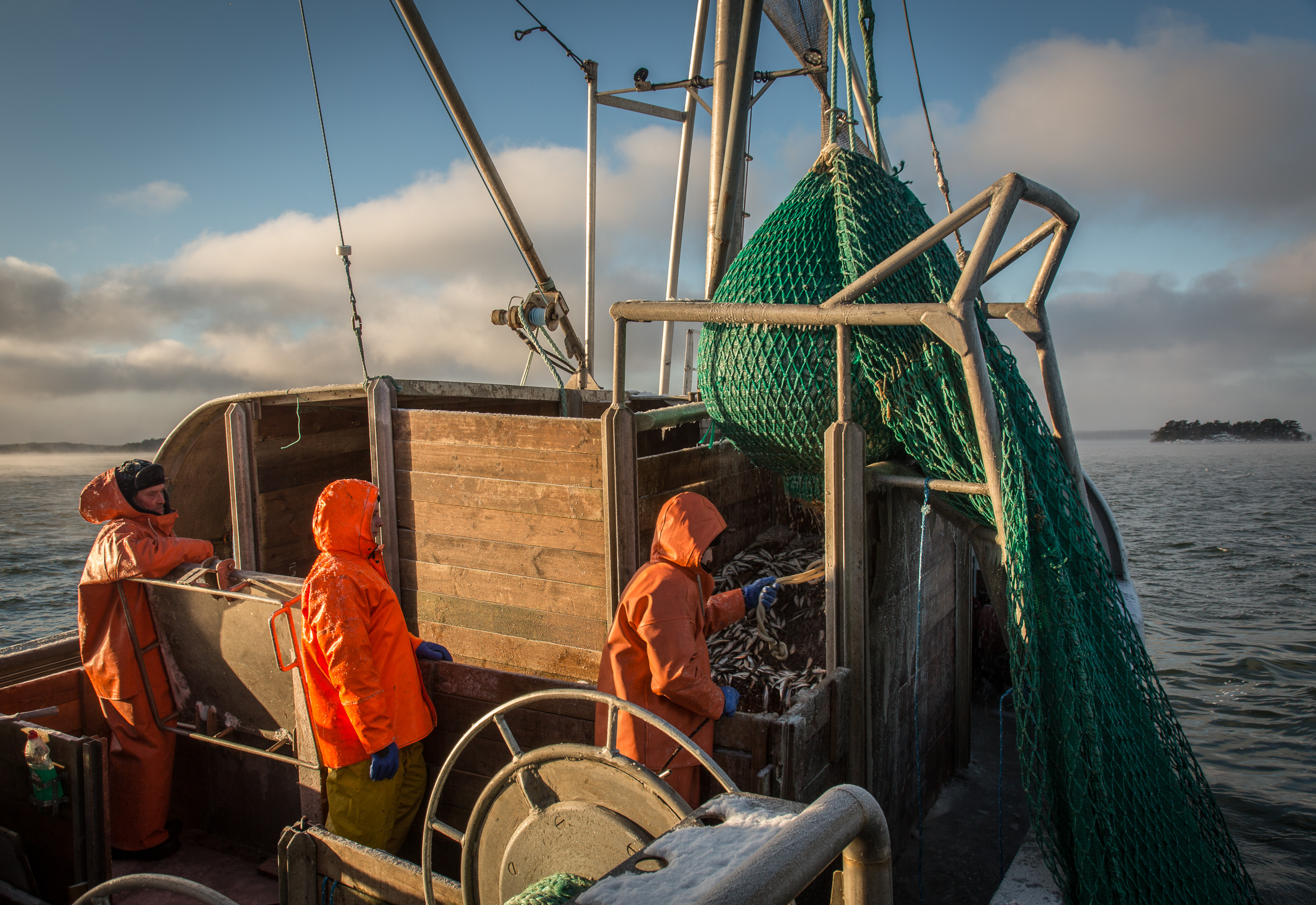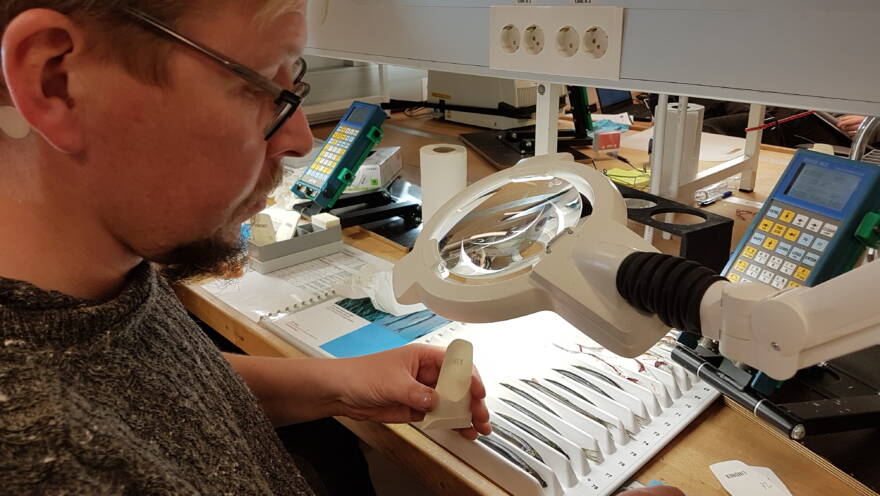
Commercial fishing at sea
Finland is one of the major fishing nations in the Baltic Sea. Herring and sprat account for the bulk of commercial fishing in Finland. These species are fished by trawlers in the open sea and in the archipelago. Professional coastal fishermen fish for herring with static fyke nets and net fishing from boats.
Other important target species include whitefish, perch, pike-perch, salmon, vendace, pike and smelt. Cyprinid fish, such as roach have also become an increasingly important target for commercial fishing.
Only registered commercial fishermen may sell their catch to the market. They supply fish for the Finnish dining table and export it for human consumption. They also supply the raw material for the production of animal feed.
Fishing creates employment and added value in other related industries, such as fish processing, trade, and catering.

Finns eat a very small part of the herring catch
Herring accounts for two-thirds of the value of the commercial sea catch. By price, pike-perch, salmon and whitefish are the most valuable target species. These are mainly used for domestic consumption.
The cheaper smelt, herring and sprat are exported in large quantities to Eastern Europe as food. Herring is also used as a raw material for producing feed, either as fishmeal for fish farming or feed for fur-bearing animals in the fur trade. Only 3% of the Baltic herring is used for domestic food consumption.
Baltic herring is the main catch of commercial fishing
The so-called Baltic herring (Clupea harengus) is a smaller-growing form of the much larger Atlantic herring. Due to the brackish water conditions in the Baltic Sea, Baltic herring grow more slowly than their oceanic counterparts. Baltic herring is a shoaling fish species of the open sea that feeds on zooplankton and
benthic crustaceans, such as mysid shrimps and amphipods.
The most important herring stock in Finland is found in the Gulf of Bothnia, which accounts for 70-80% of the country’s annual commercial fishery catch. Based on an evaluation of the entire area, other important sources of Baltic herring for Finland are the stocks of the Baltic Sea Proper and the Gulf of Finland, which are fished by most of the Baltic Sea coastal states.

The MSC-certificate was awarded to herring and sprat fishing
Finns would like to eat more domestic wild fish. However, the supply of fish has declined since the number of commercial fishermen is also decreasing. Pike-perch, whitefish and perch are in short supply for most of the year. This, greater amounts of herring could be eaten once more.
Herring is a healthy and environmentally friendly fish product. Moreover, a significant amount of nutrients is removed from the Baltic Sea due to herring fishing. In the autumn of 2018, in recognition of sustainable fishing practices, fishing for herring and sprat using trawling and fyke nets were the first to receive MSC (Marine Stewardship Council) certification in Finland.
Fisheries regulation aims at biological, as well as economically and socially sustainable fishing
Commercial fishing for fishery resources in the Baltic Sea is governed by international agreements or national legislation. Such regulation is based on regular stock assessments and stakeholder consultation.
The Natural Resources Institute Finland (LUKE) collects biological, economic, and statistical information in support of the EU’s Common Fisheries Policy.
Based on this information, certain organisations, inter alia, the International Council for the Exploration of the Sea (ICES) makes recommendations on the stock or regulatory area to the Commission of the European Union. The Commission, in turn, will agree on national catch quotas for the different species for the following year in negotiations with the Member States and Russia.
The Natural Resources Institute Finland (LUKE) continuously monitors the state of salmon, herring, and sprat stocks in the Baltic Sea. It also monitors the results of cod surveys. Such monitoring activities provide estimates of the past and present state of a fishery’s resources and make it possible to forecast their changes.
The fisheries laws and the regulations implementing its objectives provide for, among others: closed seasons, as well as appropriate catch sizes and gear. In particular, the legislation affects the status of species of fish subject to commercial inshore fishing such as pike-perch, whitefish, and sea trout.

The fishing industry has a long tradition in Finland
Fish is the largest marine resource that provides environmentally friendly and healthy nutrition for both humans, as well as domestic and farmed animals. This natural resource creates added value to the entire fisheries production chain.
Fishing has a long cultural tradition in Finland. Commercial fishing continues to provide jobs in dispersed settlement areas of the archipelago and the coast. Most of the fishing industry is small-scale and seasonal.
-
 Find out more
Find out moreFisheries monitoring and research
-
 Find out more
Find out moreFish species

